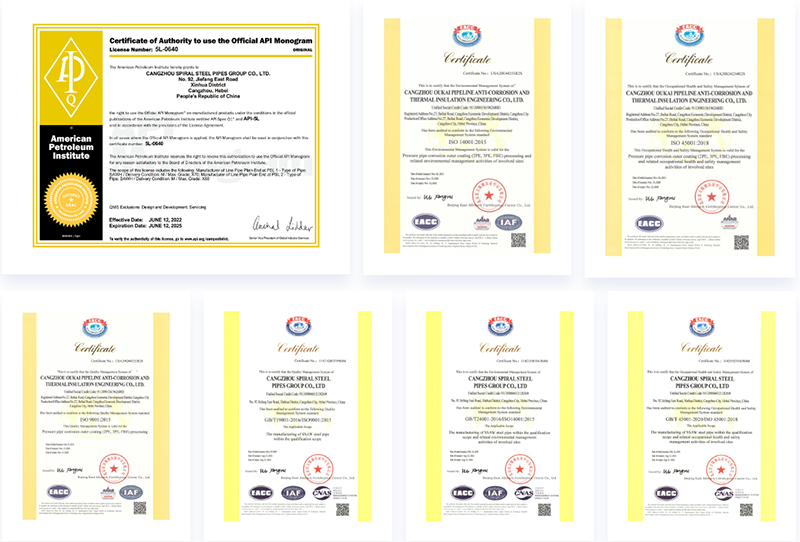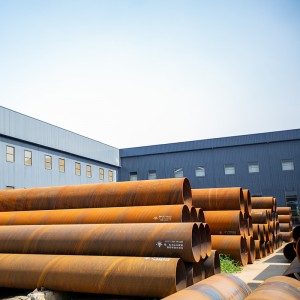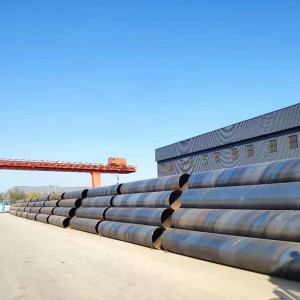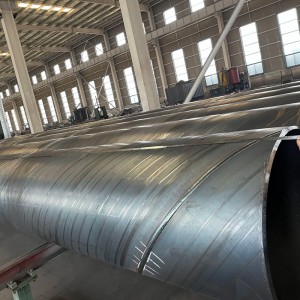SSAW Steel Pipe Welding Procedures For Gas Lines
SSAW steel pipe, also known as submerged arc welded pipe, is commonly used in gas pipeline installations due to its durability and strength. However, the effectiveness of these pipes depends heavily on the quality of the welding procedures used during installation. Improper welding techniques can result in weak and damaged joints, resulting in potential safety hazards and system failure.
Mechanical Property
|
steel grade |
minimum yield strength |
Tensile strength |
Minimum elongation |
Minimum impact energy |
||||
|
Specified thickness |
Specified thickness |
Specified thickness |
at test temperature of |
|||||
|
<16 |
>16≤40 |
<3 |
≥3≤40 |
≤40 |
-20℃ |
0℃ |
20℃ |
|
| S235JRH |
235 |
225 |
360-510 |
360-510 |
24 |
- |
- |
27 |
| S275J0H |
275 |
265 |
430-580 |
410-560 |
20 |
- |
27 |
- |
| S275J2H |
27 |
- |
- |
|||||
| S355J0H |
365 |
345 |
510-680 |
470-630 |
20 |
- |
27 |
- |
| S355J2H |
27 |
- |
- |
|||||
| S355K2H |
40 |
- |
- |
|||||
One of the key factors in ensuring the integrity of a gas pipeline installation using spiral submerged arc welded steel pipe is the selection of the appropriate welding process. This includes careful consideration of welding methods, filler materials and pre-weld preparation. Additionally, compliance with industry standards and regulations is critical to ensuring the reliability and safety of gas lines systems.
Proper pre-welding preparation is crucial to ensure successful welding of spiral submerged arc welded steel pipes in gas line installations. This involves thorough cleaning and inspection of the pipe surface to remove any contaminants or defects that may affect the quality of the weld. Additionally, to achieve a strong and reliable weld, the pipe must be accurately measured and aligned.

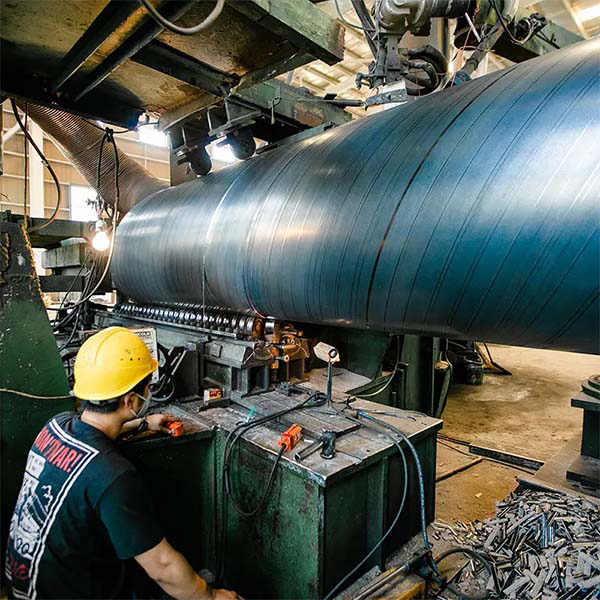
During the actual welding process, attention to detail and adherence to correct technique are crucial. Choosing the appropriate welding method, whether TIG (tungsten inert gas welding), MIG (metal inert gas welding) or SMAW (stick arc welding), must be chosen based on the specific requirements of the gas pipeline installation. Additionally, the use of high-quality filler materials and careful welding procedures are critical to producing reliable and durable welds that meet the requirements of gas pipeline operations.
Additionally, post-weld inspection and testing are important steps to ensure weld quality and integrity in gas pipeline installations using SSAW steel pipe. Non-destructive testing methods, such as radiographic testing and ultrasonic testing, can help identify any potential defects or discontinuities in welded joints so they can be repaired promptly and ensure the reliability of your gas piping system.
In summary, correct welding procedures are crucial for installing gas lines using spiral submerged arc welded steel pipes. The integrity and safety of your gas piping system depends on the quality of your welding, so welding industry standards and best practices must be followed. By prioritizing proper pre-weld preparation, meticulous welding techniques, and thorough post-weld inspections, gas pipe installers can ensure the reliability and safety of SSAW steel pipe installations for gas pipeline applications.
